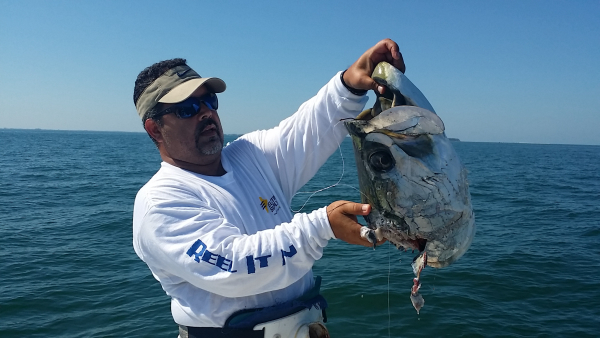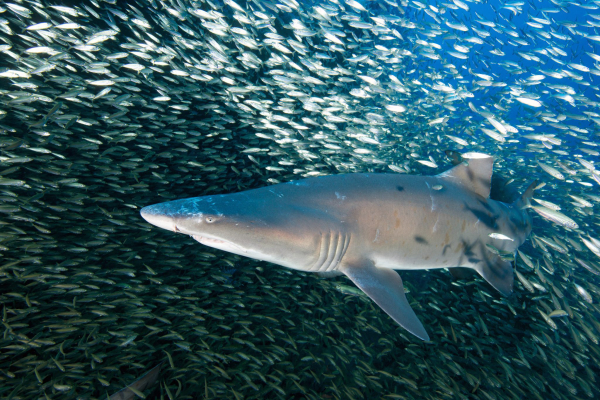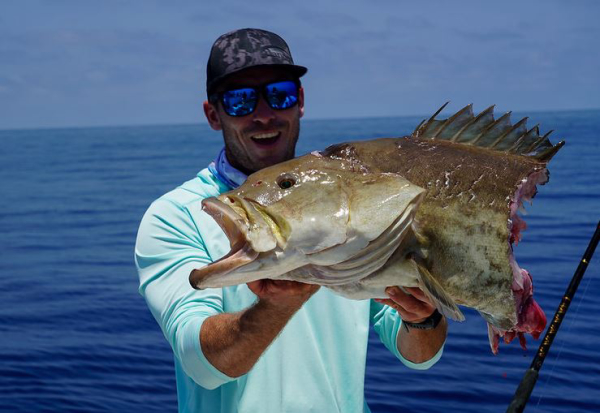
Despite the whimpers and moans of sharkniks, shark populations in U.S. waters are doing fine.
In fact, they’re doing more than fine. They’re eating us—and maybe themselves—out of house and home.
After some 30 years of tight harvest limits on all the shark species that were formerly overfished, most have come back in a big way. And that’s a good thing, despite the increase in shark attacks on humans this summer.
Sharks are a natural part of the predator/prey balance in the world’s oceans, and where there are lots of sharks, there are also lots of gamefish. There have to be to support the big eaters.
But there can be such a thing as too many sharks, too, in some areas. Right now, those areas are the tarpon waters of the Florida Keys and Boca Grande, and the many grouper/snapper reefs of the Gulf of Mexico.

Many charter skippers are now reporting there are so many sharks on some reefs that it’s almost impossible to get a whole fish to the boat.
What’s more, some captains say the sharks have become conditioned to the sound of outboard motors, and come running when a boat pulls up over a likely fishing spot. They circle the boat until a fish is hooked, then zoom in and gulp it down. Anglers wind up killing a half dozen or more reef fish for every one they harvest whole.
For charter captains and their customers, the shark abundance makes reef fishing in some areas impossible. For commercial fishers who supply fresh fish to markets around the country, it’s also a huge issue.
While this makes for a lot of fat, happy sharks, it’s hard on the somewhat less sanguine grouper and snapper populations.
And of course tarpon anglers, who never kill their catch, are not at all happy when they release a six-footer and watch it swim off to fight again—but instead a hammerhead or a bull comes rising up out of the depths and cuts it in half. It happens frequently around the bridges in the keys from April through October, and everywhere in Boca Grande Pass during the spring/summer run.

Anglers are proposing that the tight limits on some shark species be relaxed to allow some harvest. Shark tournaments used to be one of the main limiters on shark populations, but fell out of favor due to bad press-a bunch of stinky, dead sharks hung upside down at the docks, going to waste, was a bad look. And these were going on at a time when some shark species were clearly in trouble, even in U.S. waters.
Now, most species are back in a big way, and we might need to take adjust our thinking to how we manage the populations.
Bonefish & Tarpon Trust, a leading conservation group for flats species, is conducting a survey to get data on shark depredation of their Big Three, tarpon, bonefish and permit, in the Keys. You can take part in it here if you fish the tropic flats:
The SHARKED Act passed in Congress in February is aimed at the same problem. Although when Congress “authorizes a study” it’s sometimes to be sure nothing ever happens on an issue, this one looks like it has teeth . . . ahem.
Anyway, the study is backed by the American Sportfishing Association as well as other fishing oriented groups, and will shed light on the scope of the problem, but going back to the days of dozens of dead sharks hung at the docks to decompose in the sun is not likely to be part of the solution.
There’s no question that sharks are still being far overfished in some parts of the world where they are considered food fish—or very wastefully, a source of sharkfin soup. But as with many species, sharks in U.S. waters have come back strong thanks to conservation rules—and now need a bit of management in some form to trim back their numbers in areas where they are most numerous.
By Frank Sargeant